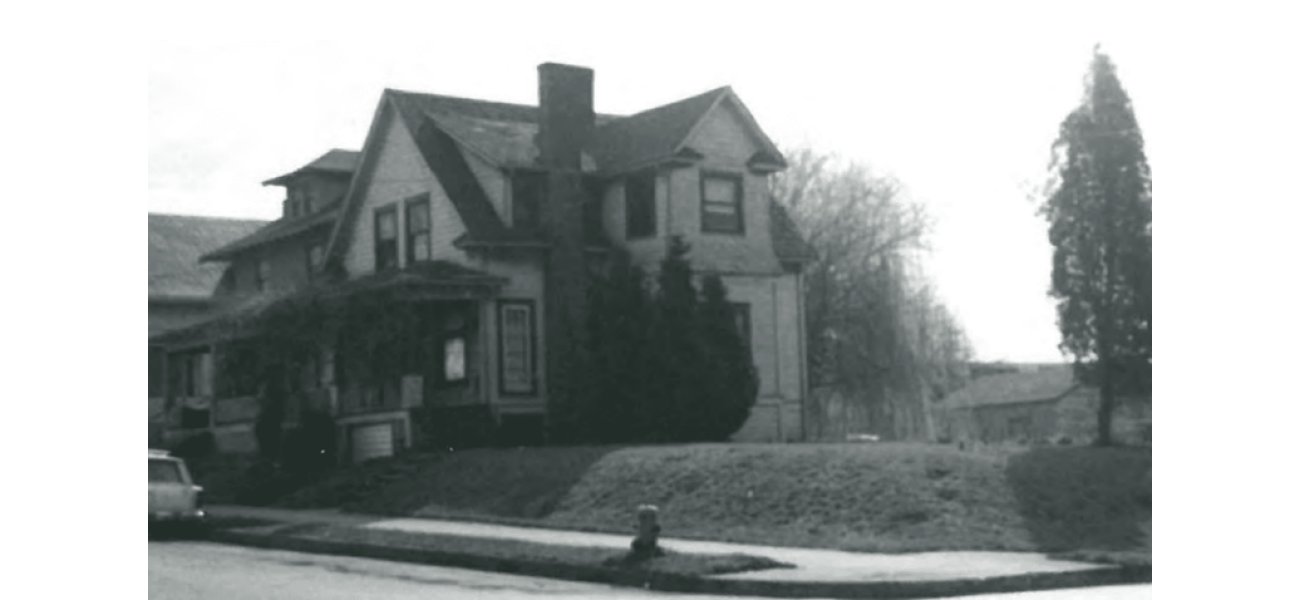Black families in Portland successfully fought for reparations after discovering a previously unknown avenue to seek justice.
The Albina district in Portland, Oregon, was once a vibrant hub for the Black community, known for its music scene and cultural significance.
August 18th 2025.

For many years, the Albina district in Portland, Oregon was the heart of the city's Black community. It was a vibrant and bustling neighborhood, known for its lively music scene. Local musicians made Albina a hotspot for jazz, blues, and soul music on the West Coast, giving it the nickname "Jumptown" in the 1940s and '50s. The community was also a hub for important civil rights discussions and milestones, with meetings taking place in the neighborhood's parks and gathering halls. In fact, it was the residents of Albina who spearheaded a tree-planting program that is now responsible for the beautiful cherry trees that can be seen throughout Portland.
Unfortunately, by the 1970s, much of Albina had disappeared. The government had implemented urban renewal projects that divided and displaced hundreds of Black families, as reported by Next City. Stories like this are not unique to Portland, as cities across the nation have similar histories. However, last month, something remarkable happened in Portland. With the help of community organizers, a new chapter was written as the city became one of the first in the United States to hold public agencies accountable for their racist policies that displaced families decades ago. This settlement includes an $8.5 million payment to survivors and descendants, as well as other forms of support.
Despite the current federal administration's efforts to roll back protections, this settlement sends a powerful message about the impact of community organizing and the dedication of local elected officials to address historical injustices. J. Ashlee Albies, an attorney for the plaintiffs, emphasizes the importance of acknowledging and addressing the lasting effects of racism, regardless of the federal government's stance on the matter.
The federal civil rights lawsuit was filed by 26 individual survivors and descendants of families who were forcibly removed from the historic Central Albina neighborhood. The defendants included the City of Portland, the city's development commission known as Portland Prosper, and a hospital that were all involved in a redevelopment project in the 1950s. The Emanuel Displaced Persons Association 2, a group representing survivors and descendants, was also a plaintiff in the case.
According to the lawsuit, the defendants conspired to displace hundreds of families from their homes and businesses in Central Albina between the 1950s and 1970s. This neighborhood was historically home to 80% of Portland's Black population. The City of Portland and Portland Prosper's predecessor, the Portland Development Commission, demolished over 180 properties in the neighborhood, including homes, businesses, and buildings belonging to churches and community groups. Shockingly, 74% of those displaced were Black, and many of them were homeowners. The founder of EDPA2, Gloria Byrd, describes this event as a "real estate massacre."
At the time, the City of Portland and PDC claimed that the properties in Central Albina were "blighted" and used eminent domain to force residents out of their homes. They argued that the demolitions were necessary to expand Emanuel Hospital, now known as Legacy Emanuel Hospital. However, the hospital expansion never came to fruition. Today, much of the land that was seized from Black families remains vacant or is used solely for parking. Survivors remember a very different Central Albina, one that was a thriving and close-knit community. Donna Marshall, whose family was the last to leave the neighborhood in the 1970s, shared with Oregon Public Broadcasting that it was a "thriving Black neighborhood, a thriving community."
For many families, the loss of their homes in Central Albina had a significant impact on their lives. It meant losing their community, their inheritance, and access to education, employment, and other opportunities. Marshall recalls, "I lost all my friends. We lost our business. Everything just fell apart." Gloria Byrd, who was a trained librarian before becoming a community archivist, played a crucial role in uncovering the history of Central Albina. Through extensive research, she was able to gather evidence and lay the groundwork for the legal claim. Byrd poured over Portland archives, old newspaper articles, and spoke with community members to piece together the story. In the process, she discovered something unexpected and personal. "I saw my grandmother's name in one of the documents," Byrd shares. "I was like, 'Wait a minute, this is my grandmother.' That's when I was determined to find out what had happened." Byrd also learned more about the original Emanuel Displaced Persons Association, a group that gathered in a church basement to fight against the removal of Black families from Central Albina decades ago.
In the bustling city of Portland, Oregon, there was a vibrant neighborhood known as Albina that was the heart of the Black community for many years. It was a place where music thrived, with talented local musicians turning the area into a hub for jazz, blues, and soul. In fact, it was so popular that it earned the nickname "Jumptown" in the 1940s and '50s. But Albina was more than just a music scene, it was also a center for civil rights activism and community gatherings. One particular achievement was the implementation of a citywide tree-planting program, responsible for the beautiful blooming cherry trees that Portland is known for today.
Unfortunately, by the 1970s, Albina had drastically changed. The government had intervened in the name of urban renewal, resulting in the displacement of hundreds of Black families. This story is not unique to Portland, as many cities across the country have similar tales. However, in a positive turn of events, Portland recently saw a new chapter being written in its history. Community organizers joined forces to hold public agencies accountable for their role in the racist policies that had caused the displacement of families decades ago. This resulted in a landmark settlement, which includes an $8.5 million payment to survivors and descendants, as well as other forms of support.
This settlement is a powerful message about the impact of community organizing and the role of local elected officials in addressing past wrongdoings. According to attorneys and plaintiffs, it is a significant step in addressing the lasting effects of historical racism, especially in a time when federal protections are being rolled back. J. Ashlee Albies, an attorney for the plaintiffs, emphasizes the importance of acknowledging and addressing these issues, regardless of the stance of the federal government.
The legal claim was brought forth by 26 individual survivors and descendants of families who were displaced from the historic Central Albina neighborhood. The defendants named in the suit were the City of Portland, their development commission called Portland Prosper, and a hospital that was involved in a redevelopment scheme in the 1970s. The Emanuel Displaced Persons Association 2 (EDPA2), an organization representing survivors and descendants, was also a plaintiff.
The lawsuit alleged that from the 1950s to the 1970s, the defendants conspired to forcibly remove hundreds of families from their homes and businesses in Central Albina. This neighborhood was home to 80% of Portland's Black population and held a significant cultural and historical significance for the community. The City of Portland and Portland Prosper's predecessor, the Portland Development Commission, demolished over 180 properties in the area between 1971 and 1973, including homes, businesses, and community buildings. Shockingly, 74% of those displaced were Black, many of whom were homeowners. The founder of EDPA2, Byrd, refers to this period as a "real estate massacre."
The defendants justified these actions by claiming that the properties in Central Albina were dilapidated and needed to be demolished to make way for the expansion of Emanuel Hospital (now called Legacy Emanuel Hospital). However, this expansion never actually happened. Today, many of the vacant lots and parking spaces in the area are a painful reminder of the once-thriving community that was destroyed. Survivors recall a very different Central Albina, one that was full of life and opportunities. Donna Marshall, whose family was the last to leave the neighborhood in the 1970s, remembers it as a "thriving Black neighborhood" that was torn apart when they were forced to relocate.
One of the plaintiffs, Mike Hepburn, has a personal connection to the destruction of Central Albina. His grandparents, Donald and Elizabeth Hepburn, owned a duplex that had been in their family since the early 1900s. However, their home was demolished against their will to make way for the expansion of Emanuel Hospital. The loss of homes in Central Albina not only meant the loss of physical property but also the loss of community, inheritance, and access to education and employment opportunities.
The groundwork for the legal claim was laid by Byrd, a trained librarian who became a community archivist. Through her research, she uncovered the true extent of the destruction that occurred in Central Albina. Her research involved scouring Portland archives, old newspaper articles, and even talking to people who had lived in the neighborhood. In a surprising turn of events, she discovered that her own grandmother's name was mentioned in one of the documents she came across. This gave her a personal connection to the cause and motivated her to dig deeper. She also learned more about the original Emanuel Displaced Persons Association, a group that had come together in the 1970s to try and prevent the removal of Black families from Central Albina.
Unfortunately, by the 1970s, much of Albina had disappeared. The government had implemented urban renewal projects that divided and displaced hundreds of Black families, as reported by Next City. Stories like this are not unique to Portland, as cities across the nation have similar histories. However, last month, something remarkable happened in Portland. With the help of community organizers, a new chapter was written as the city became one of the first in the United States to hold public agencies accountable for their racist policies that displaced families decades ago. This settlement includes an $8.5 million payment to survivors and descendants, as well as other forms of support.
Despite the current federal administration's efforts to roll back protections, this settlement sends a powerful message about the impact of community organizing and the dedication of local elected officials to address historical injustices. J. Ashlee Albies, an attorney for the plaintiffs, emphasizes the importance of acknowledging and addressing the lasting effects of racism, regardless of the federal government's stance on the matter.
The federal civil rights lawsuit was filed by 26 individual survivors and descendants of families who were forcibly removed from the historic Central Albina neighborhood. The defendants included the City of Portland, the city's development commission known as Portland Prosper, and a hospital that were all involved in a redevelopment project in the 1950s. The Emanuel Displaced Persons Association 2, a group representing survivors and descendants, was also a plaintiff in the case.
According to the lawsuit, the defendants conspired to displace hundreds of families from their homes and businesses in Central Albina between the 1950s and 1970s. This neighborhood was historically home to 80% of Portland's Black population. The City of Portland and Portland Prosper's predecessor, the Portland Development Commission, demolished over 180 properties in the neighborhood, including homes, businesses, and buildings belonging to churches and community groups. Shockingly, 74% of those displaced were Black, and many of them were homeowners. The founder of EDPA2, Gloria Byrd, describes this event as a "real estate massacre."
At the time, the City of Portland and PDC claimed that the properties in Central Albina were "blighted" and used eminent domain to force residents out of their homes. They argued that the demolitions were necessary to expand Emanuel Hospital, now known as Legacy Emanuel Hospital. However, the hospital expansion never came to fruition. Today, much of the land that was seized from Black families remains vacant or is used solely for parking. Survivors remember a very different Central Albina, one that was a thriving and close-knit community. Donna Marshall, whose family was the last to leave the neighborhood in the 1970s, shared with Oregon Public Broadcasting that it was a "thriving Black neighborhood, a thriving community."
For many families, the loss of their homes in Central Albina had a significant impact on their lives. It meant losing their community, their inheritance, and access to education, employment, and other opportunities. Marshall recalls, "I lost all my friends. We lost our business. Everything just fell apart." Gloria Byrd, who was a trained librarian before becoming a community archivist, played a crucial role in uncovering the history of Central Albina. Through extensive research, she was able to gather evidence and lay the groundwork for the legal claim. Byrd poured over Portland archives, old newspaper articles, and spoke with community members to piece together the story. In the process, she discovered something unexpected and personal. "I saw my grandmother's name in one of the documents," Byrd shares. "I was like, 'Wait a minute, this is my grandmother.' That's when I was determined to find out what had happened." Byrd also learned more about the original Emanuel Displaced Persons Association, a group that gathered in a church basement to fight against the removal of Black families from Central Albina decades ago.
In the bustling city of Portland, Oregon, there was a vibrant neighborhood known as Albina that was the heart of the Black community for many years. It was a place where music thrived, with talented local musicians turning the area into a hub for jazz, blues, and soul. In fact, it was so popular that it earned the nickname "Jumptown" in the 1940s and '50s. But Albina was more than just a music scene, it was also a center for civil rights activism and community gatherings. One particular achievement was the implementation of a citywide tree-planting program, responsible for the beautiful blooming cherry trees that Portland is known for today.
Unfortunately, by the 1970s, Albina had drastically changed. The government had intervened in the name of urban renewal, resulting in the displacement of hundreds of Black families. This story is not unique to Portland, as many cities across the country have similar tales. However, in a positive turn of events, Portland recently saw a new chapter being written in its history. Community organizers joined forces to hold public agencies accountable for their role in the racist policies that had caused the displacement of families decades ago. This resulted in a landmark settlement, which includes an $8.5 million payment to survivors and descendants, as well as other forms of support.
This settlement is a powerful message about the impact of community organizing and the role of local elected officials in addressing past wrongdoings. According to attorneys and plaintiffs, it is a significant step in addressing the lasting effects of historical racism, especially in a time when federal protections are being rolled back. J. Ashlee Albies, an attorney for the plaintiffs, emphasizes the importance of acknowledging and addressing these issues, regardless of the stance of the federal government.
The legal claim was brought forth by 26 individual survivors and descendants of families who were displaced from the historic Central Albina neighborhood. The defendants named in the suit were the City of Portland, their development commission called Portland Prosper, and a hospital that was involved in a redevelopment scheme in the 1970s. The Emanuel Displaced Persons Association 2 (EDPA2), an organization representing survivors and descendants, was also a plaintiff.
The lawsuit alleged that from the 1950s to the 1970s, the defendants conspired to forcibly remove hundreds of families from their homes and businesses in Central Albina. This neighborhood was home to 80% of Portland's Black population and held a significant cultural and historical significance for the community. The City of Portland and Portland Prosper's predecessor, the Portland Development Commission, demolished over 180 properties in the area between 1971 and 1973, including homes, businesses, and community buildings. Shockingly, 74% of those displaced were Black, many of whom were homeowners. The founder of EDPA2, Byrd, refers to this period as a "real estate massacre."
The defendants justified these actions by claiming that the properties in Central Albina were dilapidated and needed to be demolished to make way for the expansion of Emanuel Hospital (now called Legacy Emanuel Hospital). However, this expansion never actually happened. Today, many of the vacant lots and parking spaces in the area are a painful reminder of the once-thriving community that was destroyed. Survivors recall a very different Central Albina, one that was full of life and opportunities. Donna Marshall, whose family was the last to leave the neighborhood in the 1970s, remembers it as a "thriving Black neighborhood" that was torn apart when they were forced to relocate.
One of the plaintiffs, Mike Hepburn, has a personal connection to the destruction of Central Albina. His grandparents, Donald and Elizabeth Hepburn, owned a duplex that had been in their family since the early 1900s. However, their home was demolished against their will to make way for the expansion of Emanuel Hospital. The loss of homes in Central Albina not only meant the loss of physical property but also the loss of community, inheritance, and access to education and employment opportunities.
The groundwork for the legal claim was laid by Byrd, a trained librarian who became a community archivist. Through her research, she uncovered the true extent of the destruction that occurred in Central Albina. Her research involved scouring Portland archives, old newspaper articles, and even talking to people who had lived in the neighborhood. In a surprising turn of events, she discovered that her own grandmother's name was mentioned in one of the documents she came across. This gave her a personal connection to the cause and motivated her to dig deeper. She also learned more about the original Emanuel Displaced Persons Association, a group that had come together in the 1970s to try and prevent the removal of Black families from Central Albina.
[This article has been trending online recently and has been generated with AI. Your feed is customized.]
[Generative AI is experimental.]
0
0
Submit Comment





